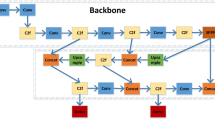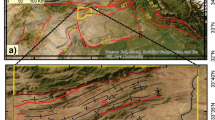Abstract
Hyperspectral image contains various wavelength channels and the corresponding imagery processing requires a computation platform with high performance. Target and anomaly detection on hyperspectral image has been concerned because of its practicality in many real-time detection fields while wider applicability is limited by the computing condition and low processing speed. The field programmable gate arrays (FPGAs) offer the possibility of on-board hyperspectral data processing with high speed, low-power consumption, reconfigurability and radiation tolerance. In this paper, we develop a novel FPGA-based technique for efficient real-time target detection algorithm in hyperspectral images. The collaborative representation is an efficient target detection (CRD) algorithm in hyperspectral imagery, which is directly based on the concept that the target pixels can be approximately represented by its spectral signatures, while the other cannot. To achieve high processing speed on FPGAs platform, the CRD algorithm reduces the dimensionality of hyperspectral image first. The Sherman–Morrison formula is utilized to calculate the matrix inversion to reduce the complexity of overall CRD algorithm. The achieved results demonstrate that the proposed system may obtains shorter processing time of the CRD algorithm than that on 3.40 GHz CPU.












Similar content being viewed by others
References
Green, R., Eastwood, M., Sarture, C.: Imaging spectroscopy and the airborne visible/infrared imaging spectrometer (aviris). Remote Sens. Environ. 65(3), 227–248 (1998)
Solomon, J., Rock, B.: Imaging spectrometry for earth remote sensing. Science 228(4704), 1147–1152 (1985)
Plaza, A., Benediktsson, J., Boardman, J.: Recent advances in techniques for hyperspectral image processing. Remote Sens. Environ. 113, S110–S122 (2009)
Bioucas-Dias, J.M., Plaza, A., Camps-Valls, G., Scheunders, P., Nasrabadi, N., Chanussot, J.: Hyperspectral remote sensing data analysis and future challenges. IEEE Trans. Geosci. Remote Sens. 1(2), 6–36 (2013)
Fauvel, M., Tarabalka, Y., Benediktsson, J.: Advances in spectral-spatial classification of hyperspectral images. Proc. IEEE 101(3), 652–675 (2013)
Li, J., Bioucas-Dias, J., Plaza, A.: Exploiting spatial information in semi-supervised hyperspectral image segmentation. Hyperspectral Image and Signal Processing: Evolution in Remote Sensing (WHISPERS), 2010 2nd Workshop on. IEEE, pp. 1–4. (2010)
Adams, J., Smith, M., Johnson, P.: Spectral mixture modeling: A new analysis of rock and soil types at the viking lander 1 site. J. Geophys. Res. Solid Earth 91(B8), 8098–8112 (1986)
Eismann, M., Stocker, A., Nasrabadi, N.: Automated hyperspectral cueing for civilian search and rescue. Proc. IEEE 97(6), 1031–1055 (2009)
Sharifahmadian, E., Latifi, S.: Advanced hyperspectral remote sensing for target detection. 2011 21st International Conference on Systems Engineering (ICSEng), pp. 200–205. IEEE (2011)
Li, W., Du, Q.: Decision fusion for dual-window-based hyperspectral anomaly detector. J. Appl. Remote Sens. 9(1), 097297-1–097297-11 (2015)
Borghys, D., Achard, V., Rotman, S.: Hyperspectral anomaly detection: a comparative evaluation of methods. General Assembly and Scientific Symposium, 2011 XXXth URSI, pp. 1–4. IEEE (2011)
Melero, J.M., Garzón, E.M., García, I., Plaza, A.: Analysis and optimizations of global and local versions of the RX algorithm for anomaly detection in hyperspectral data. IEEE J. Sel. Top. Appl. Earth Obs. Remote Sens. 6(2), 801–814 (2013)
Acito, N., Corsini, G., Diani, M.: Adaptive detection algorithm for full pixel targets in hyperspectral images. IEEE Proc Vis. Image Signal Process 152(6), 731–740 (2005)
Sidike, P., Asari, V.K., Alam, A.S.: Multiclass object detection with single query in hyperspectral imagery using class-associative spectral fringe-adjusted joint transform correlation. IEEE Trans. Geosci. Remote Sens. 54(2), 1196–1208 (2016)
Capobianco, L., Garzelli, A.: Target detection with semi-supervised kernel orthogonal subspace projection. IEEE Trans. Geosci. Remote Sens. 47(11), 3822–3833 (2009)
Manolakis, D., Marden, D., Shaw, G.A.: Hyperspectral image processing for automatic target detection applications. Lincoln Lab. J. 14(1), 79–116 (2003)
Nasrabadi, N.M.: Regularized spectral matched filter for target recognition in hyperspectral imagery. IEEE Signal Process. Lett. 15, 317–320 (2008)
Liu, Y., Gao, G., Gu, Y.: Tensor matched subspace detector for hyperspectral target detection. IEEE Trans. Geosci. Remote Sens. PP(99), 1–8 (2017)
Li, W., Du, Q.: Collaborative representation for hyperspectral anomaly detection. IEEE Trans. Geosci. Remote Sens. 53(3), 1463–1474 (2015)
Jin, X., Paswaters, S., Cline, H.: A comparative study oftarget detection algorithms for hyperspectral imagery. Proc. SPIE 7334, 73341W-1–73341W-12 (2009)
Nasrabadi, N.: Regularized spectral matched filter for target recognition in hyperspectral imagery. IEEE Signal Process. Lett. 15, 317–320 (2008)
Cervero, T., Caba, J., López, S.: A scalable and dynamically reconfigurable FPGA-based embedded system for real-time hyperspectral unmixing. IEEE J. Sel. Top. Appl. Earth Obs. Remote Sens. 8(6), 2894–2911 (2015)
Gonzalez, C., Lopez, S., Mozos, D., Sarmiento, R.: FPGA implementation of the hysime algorithm for the determination of the number of endmembers in hyperspectral data. IEEE J. Sel. Top. Appl. Earth Obs. Remote Sens. 8(6), 2870–2883 (2015)
Gonzalez, C., Resano, J., Plaza, A., Mozos, D.: FPGA implementation of abundance estimation for spectral unmixing of hyperspectral data using the image space reconstruction algorithm. IEEE J. Sel. Top. Appl. Earth Obs. Remote Sens. 5(1), 248–261 (2012)
Plaza, A., Plaza, J., Paz, A., Sanchez, S.: Parallel hyperspectral image and signal processing applications corner. IEEE Signal Process. Mag. 28(3), 119–126 (2011)
Lee, C., Gasster, S., Plaza, A., Chang, C., Huang, B.: Recent developments in high performance computing for remote sensing: a review. IEEE J. Sel. Top. Appl. Earth Obs. Remote Sens. 4(3), 508–527 (2011)
Gonzalez, C., Sánchez, S., Paz, A.: Use of FPGA or GPU-based architectures for remotely sensed hyperspectral image processing. Integr. VLSI J. 46(2), 89–103 (2013)
Setoain, J., Prieto, M., Tenllado, C., Tirado, F.: GPU for parallel on-board hyperspectral image processing. Int. J. High Perform. Comput. Appl. 22(4), 424–437 (2008)
Hossam, M., Ebied, H., Abdel-Aziz, M.: Hybrid cluster of multicore CPUs and GPUs for accelerating hyperspectral image hierarchical segmentation. 2013 8th International Conference on Computer Engineering and Systems (ICCES), pp. 262–267. IEEE (2013)
El-Araby, E., El-Ghazawi, T., Moigne, J.L., Irish, R.: Reconfigurable processing for satellite on-board automatic cloud cover assessment. J. Real-Time Image Proc. 4(3), 245–259 (2009)
Hauck, S.: The roles of FPGAs in reprogrammable systems. Proc. IEEE, 86(4), 615–638 (1998)
Sterpone, L., Porrmann, M., Hagemeyer, J.: A novel fault tolerant and runtime reconfigurable platform for satellite payload processing. IEEE Trans. Comput. 62(8), 1508–1525 (2013)
González, C., Resano, J., Mozos, D., Plaza, A., Valencia, D.: FPGA implementation of the pixel purity index algorithm for remotely sensed hyperspectral image analysis. EURASIP J. Adv. Signal Process 2010(1), 969806-1–969806-13 (2010)
Das, A., Nguyen, D., Zambreno, J., Memik, G., Choudhary, A.: An FPGA-based network intrusion detection architecture. IEEE Trans. Inf. Forensics Secur. 3(1), 118–132 (2008)
Chang, C., Ren, H., Chiang, S.: Real-time processing algorithms for target detection and classification in hyperspectral imagery. IEEE Trans. Geosci. Remote Sens. 39(4), 760–768 (2001)
Molero, J., Garzón, E., García, I., Plaza, A.: Analysis and optimizations of global and local versions of the RX algorithm for anomaly detection in hyperspectral data. IEEE J. Sel. Top. Appl. Earth Obs. Remote Sens. 6(2), 801–814 (2013)
Yang, B., Yang, M., Plaza, A., Gao, L., Zhang, B.: Dual-mode FPGA implementation of target and anomaly detection algorithms for real-time hyperspectral imaging. IEEE J. Sel. Top. Appl. Earth Obs. Remote Sens. 8(6), 2950–2961 (2015)
González, C., Bernabé, S., Mozos, D., Plaza, A.: FPGA implementation of an algorithm for automatically detecting targets in remotely sensed hyperspectral images. IEEE J. Sel. Top. Appl. Earth Obs. Remote Sens. 9(9), 4334–4343 (2016)
Lin, H.: The realize of matrix operation based on FPGA.” Nanjing University of Science and Technology for the Degree of Master, pp. 1–67 (2007)
Bartlett, M.: An inverse matrix adjustment arising in discriminant analysis. Ann. Math. Stat. 22(1), 107–111 (1951)
Acknowledgements
This work was supported by the National Natural Science Foundation of China under Grants No. NSFC-91638201, 61571033, 41722108, and partly by the Higher Education and High-Quality and World-Class Universities under Grant No. PY201619.
Author information
Authors and Affiliations
Corresponding author
Rights and permissions
About this article
Cite this article
Wu, J., Jin, Y., Li, W. et al. FPGA implementation of collaborative representation algorithm for real-time hyperspectral target detection. J Real-Time Image Proc 15, 673–685 (2018). https://doi.org/10.1007/s11554-018-0823-7
Received:
Accepted:
Published:
Issue Date:
DOI: https://doi.org/10.1007/s11554-018-0823-7




